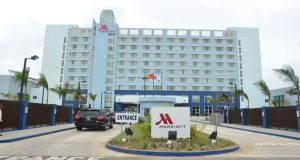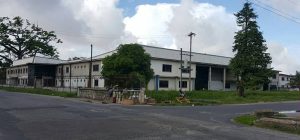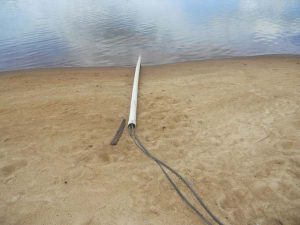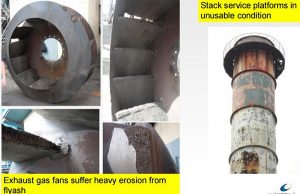BILLIONS SQUANDERED
…in a legacy of contempt for taxpayers’ dollars
By: Kiana Wilburg
Since May 11, last, many have taken the time to engage in moments of reflection. On a national level in particular, some citizens reflected on the actions and or achievements of the coalition Government since it assumed office, others reflected on Guyana’s history of corruption and what steps we have taken to improve our image in this regard.
But key to this period of reflection is the worrying legacy of contempt for taxpayer’s dollars. Over the years, there have been glaring examples of these. Hundreds of examples in this respect can be found in the Auditor General’s reports or the many forensic audit reports which were commissioned by the APNU+AFC administration.
Surely, pundits and even many concerned citizens have wondered how the wastage of billions of dollars, has set back Guyana’s development by several decades. Indeed, many have also wondered how generations upon generations will be shackled to the repayment of debt due to the gross political mistakes of our leaders.
Below is a list of just some of these “now statues of corruption” and examples of financial mismanagement” and where Guyana stands today with each.
SKELDON SUGAR FACTORY
For the next several years, you, your parents, your children and perhaps your great, grandchildren will be paying back a US$200M debt. Why? All because someone had the brilliant idea of commissioning the establishment of a factory that would magically save the dying sugar industry. Instead of serving that purpose, all the ‘state of the art’ Skeldon Sugar factory did was leave Guyana’s future generations in debt.
Skeldon’s legacy is now one of disaster, deception and aiding the descent of the sugar industry. Millions of dollars was spent on experts from various territories to save this colossal humpty dumpty and the truth before the nation today is that this factory could not be saved for all the tea in China.
Guyana has essentially wasted billions of dollars in maintenance on this factory only to be told today that it is beyond repair and that the Government is now moving to divest it.
The Marriott Hotel
The Government inherited this US$52m Chinese built structure from the previous administration and it has been an added strain on the Treasury to meet loans which have to be paid to Republic Bank. The hotel which has been built with mostly taxpayers moneys is expected to be sold off as quickly as possible. In the meantime, it is in need of over US$4m in repairs.
High Street Building
It has been over nine years since $700M was spent to construct a building on High Street and to date; the property remains abandoned and uninhabitable.
The property, located where the former headquarters of the Guyana Broadcasting Corporation (GBC) once stood, remains unsafe.
The award of the construction contract was made in 2007 to Kishan Bacchus General Contractors. It was supposed to house offices for the Ministry of Labour and the Guyana Forestry Commission. This is yet to occur. A forensic audit report ordered by Government last year had found that the building involved the National Industrial and Commercial Investments Limited (NICIL), the state-owned entity which handles investments. NICIL’s negligence resulted in some $350M in taxpayers’ money being wasted, the forensic audit report said.
In 2012, a Cabinet decision had approved the transfer by sale of the property to the Geology and Mines Commission at a purchase price of $100 million.
It was reported that Kishan Bacchus had operated without bond and owed over $50M for works he did not complete but had received payments.
FIBRE OPTIC CABLE PROJECT
Anand Goolsarran, one of Guyana’s former Auditor Generals, had found that Guyana had taken a loan from a Chinese Bank to back part of the PPP’s championed E-Governance project.
Goolsarran said that the entire loan and grant resources provided by the China Export Import Bank is repayable, inclusive of interest, in 31 equal semi-annual installments, commencing March 2017 and ending September 2032.
He emphasized, however, that those responsible for decisions relating to the execution of the project as well as for monitoring it have failed the country immensely.
It was found that the E-Governance Project benefitted friends and family under the PPP that participated in various aspects of the project. The E-Governance project included the installation of a fibre optic network from Brazil to Georgetown via the Lethem trail. It included the installation and commissioning of wireless and terrestrial network system from Moleson Creek to Anna Regina, inclusive of 54 towers. Also launched was the One Laptop Per Family Programme which targeted 90,000 households.
In 2010, Former President Bharrat Jagdeo announced that he would provide 90,000 laptops to poor families over three years at a cost of US$30M. Later that year, he said that Government entered into a contract with a Chinese firm, Huawei, for US$35M.
According to Jagdeo, the main objectives of advancing the E-Governance project was to connect schools, hospitals and the police stations and everything else so that technology can be used in providing better and faster service to the people.
With the three projects and other initiatives, it is estimated that over $20B (US$100M) was allocated in the massive scheme to fashion the internet connectivity from the infrastructure.
With the connections, a particular company could be strategically placed to offer landline and mobile telephone services, internet television and radio, and internet connectivity.
Furthermore, the Government recently announced that it has decided to scrap the Fibre Optic Cable Project which extended from Lethem to Georgetown. The atrocious state of the cable is what has informed Government’s decision to do away with it. This represents over $1.3B which has been expended on this component of this project with nothing to show for it.
The loss of US$4.2M
Surendra Engineering Corporation Limited (SECL) was the company which won the bid for the construction of a Specialty Hospital in 2012.
It was agreed that the company would provide services related to designing, building, equipping, testing, delivering, installing and commissioning of facilities for the facility in Turkeyen, East Coast Demerara. The cost of the contract was over US$18M.
In December of that year, Surendra Engineering received 20 percent of the contract price as an advance payment – approximately US$3.6M. In November 2013, an additional payment of US$649,440 was made.
However, the contract was terminated when Surendra reportedly attempted to submit a performance bond from a company in Trinidad and Tobago called ‘World Bankers Company Ltd’. Following queries, the Central Bank of Trinidad and Tobago stepped in to reveal that ‘Worldwide Bankers’ was not a registered company under the insurance act of Trinidad and Tobago.
Following the termination of the contract, Government at the time moved to the Commercial Division of the High Court and sued Surendra. Government was claiming damages in excess of $100M, as well as special damages amounting to over US$4M.
Surendra had by then, flown the coop and had vacated its local office in Berbice when court officials visited to serve the writ, so when the matter was called twice, on January 21 and again on January 23, and no one appeared on behalf of the company, the court awarded judgment in favour of the Government of Guyana.
Following a court judgment awarded January 23, 2015, Government is still to collect over US$4M from the embattled Indian firm. It created a situation which left the future of the Line of Credit (LOC) threatened.
Following the APNU+AFC government’s accession to office, it reviewed the project and concluded that since there was no existing contract that could be enforced, it was impractical to continue to keep the LOC in its existing form, especially since it was attracting commitment fees.




